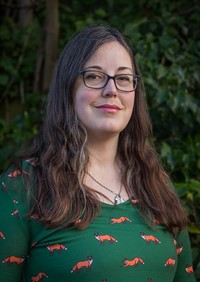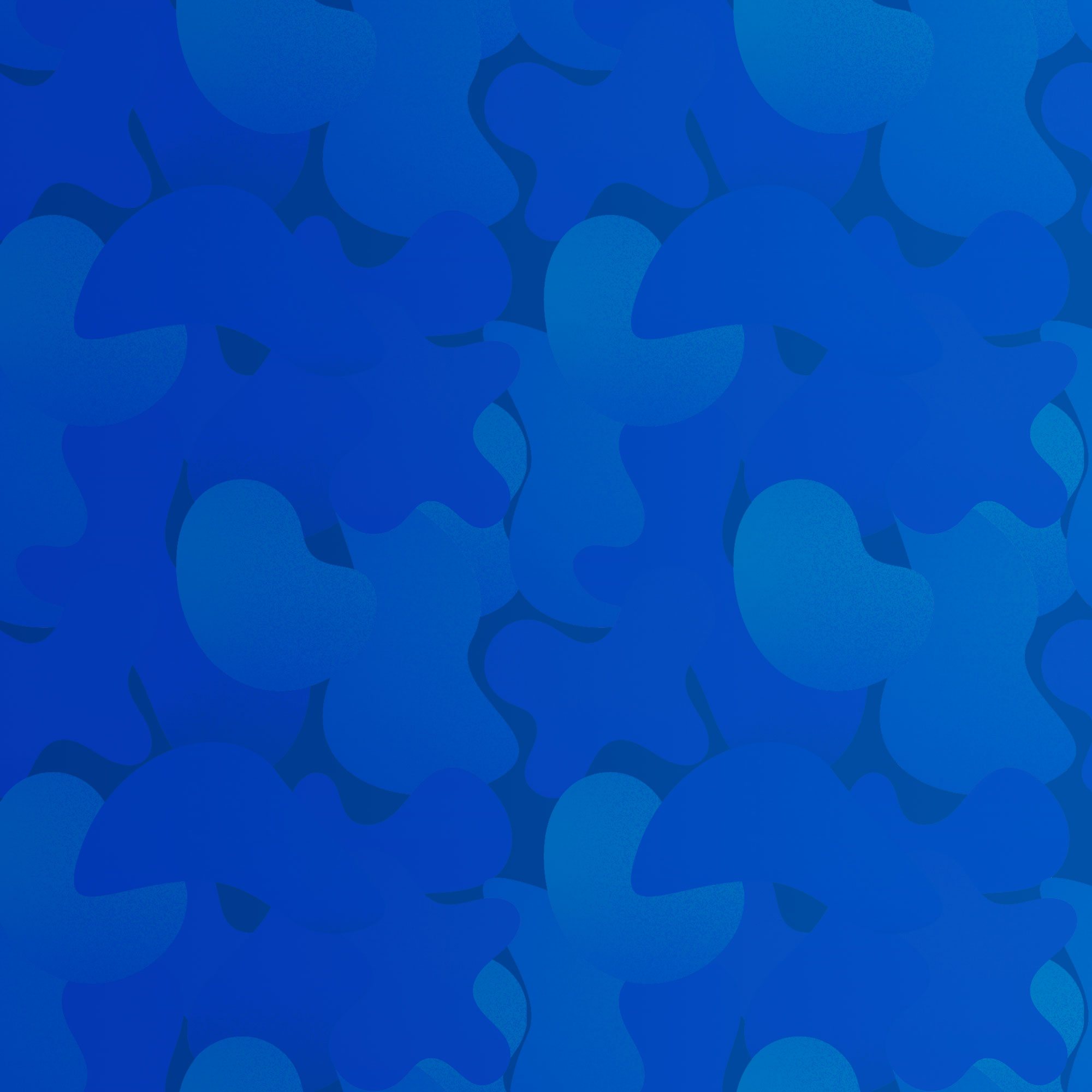Alice Nuttall introduces her gripping eco-horror novel, The Zombie Project


About Author
When Alice Nuttall was little, she was given a giant stack of yellowing scrap paper from the factory where her grandfather worked. She started writing stories on it, and didn't stop even when it eventually ran out.
Today, she writes children's stories and webcomics, as well as pet-sitting and working in her local library. She lives in Oxfordshire with her husband and two cats, the real-life Jack and Ollie.
Interview
The Zombie Project (Chicken House Books)
January 2025
Zombies, eco-warriors and corporate greed battle it out in Alice Nuttall's gripping debut, The Zombie Project, where Merian and her scientist mum turn the tide of public opinion - and save the zombies in order to save the world.
Reviews "The Zombie Project is action-packed and holds an environmental message at its core....I would highly recommend it."
ReadingZone spoke with author Alice Nuttall to find out more! You can also read a chapter from The Zombie Project
Q&A with Alice Nuttall: Scene-setting for The Zombie Project
"What would it be like in a world where zombies weren't a sign of the apocalypse,
but a normal part of life?"
1. Thank you for joining us on ReadingZone. Can you tell us what happens in your debut, The Zombie Project?
The Zombie Project is set in a world a generation after the first zombie outbreak, where zombies have become an unexpectedly normal part of life. Before the zombies came, there were food shortages thanks to bees and other pollinators going extinct - but the zombies brought a new pollinator, the death-flies, who incubate in zombies as part of their lifecycle.
My main character, Merian, is the daughter of a scientist, Dr Gwen Hope, who studies the death-flies. The two of them live in a nature reserve where zombies are brought after people die - but the reserve is under threat from a large corporation, Unilateralis. When Merian and Gwen attend a science expo in the city, a new outbreak happens; but Merian realises that the outbreak isn't all it seems, and also discovers a new variant of zombie who might hold the key to surviving the future - if she can outwit Unilateralis and get back to the reserve in time.
2. What was the spark of the idea for a story that combines climate breakdown, zombies and capitalism?
I started with the kernel of an idea - what would it be like in a world where zombies weren't a sign of the apocalypse, but a normal part of life? The opening scene, where Merian wakes up to find a zombie tapping on her window and her reaction is "just another day" has been in my head for years, but the rest of the story formed more recently, as I learned more about climate change and the threat to crucial pollinators like bees, and the fact that all these negative environmental changes are being driven by capitalism and its need to maximise profit at the expense of everything else, including the welfare of our planet.
3. How did you go about creating this world, where zombies form a natural part of the eco-system?
I looked at the close and sometimes unexpected relationships between different species - one of my major inspirations was the 'zombie caterpillar', a situation where a caterpillar gets infected with a virus that causes it to behave differently, crawling to as high a place as possible. This is pretty bad for the caterpillar, as it means it's more likely to be eaten by birds or other predators, but it's great for the virus, as this allows it to spread. I wondered what a more benevolent version of this would be like - the death-fly larvae in my book produce a toxin that makes their zombie host seek higher ground, but when they reach it, the larvae hatch into flies, which go and pollinate crops.
4. Did you need to research the effects of climate change and related topics that you touch on in the story, such as bee populations? Did anything surprise you?
I did look at the impact of climate change, particularly the decline of bee populations, which is such a serious issue - if we don't have enough pollinators, our food supply will collapse, causing worldwide devastation. In The Zombie Project, Merian's mum Gwen remembers the time before the first zombie outbreak, when temperatures were soaring and food was in short supply. While Merian isn't old enough to remember a time before the zombies, Gwen knows that the outbreak, and the spread of the death-flies, saved the world. Sadly, nothing in my research surprised me - the dangers of climate change have been known since the 1970s, and if we don't push for serious change, the future is going to be very frightening.
5. What did you need to re-think about popular zombie myths in order to create your zombies? How do cats fit into the picture?!
I love zombie stories, and I drew from a lot of my favourites while creating my zombies, while adding a few tweaks. In my fictional world, zombies are part of life - even before the major outbreak, they already existed in some remote areas where death-flies were localised. I wanted to create zombies that were similar to dangerous but natural creatures in our own world - for example, bears in certain areas of North America, which are certainly not to be underestimated, but with which we can co-exist safely as long as sensible precautions are followed.
As for cats - most zombie stories feature dogs, but I wanted to change that up a bit. Dogs are great for alerting you to danger, but they do make a lot of noise, which I've always thought would draw more zombies to you - so I came up with cats as a quieter but just as effective early-warning system. I also wanted to include my own cats in a story - Ollie and Jack are very real, although they prefer sleeping to investigating zombie reserves!
6. What are your top tips for young writers in creating their own zombie story, and making their zombies believable?
My first tip is to pin down why your zombies are up and walking around, as this will also help you work out a lot of the worldbuilding and the situations that your characters will face. In many stories, it's a virus, and the characters have to protect themselves from exposure - in others it's parasites, or a fungus, or a biochemical weapon that got out of control of its creators. Depending on the story, the reason can be as serious or as silly as you like - I've also read some great comedy zombie stories!
But finding that reason for zombies to exist is a crucial starting point, and can also lead to interesting plot twists, such as - what if someone was immune to the virus? Is there an unexpected side-effect, perhaps even one that might be positive?
7. Do you have a setting in mind for The Zombie Project - is it based somewhere you know?
The Zombie Project is based in a fictional world, but I drew on aspects of the real world when creating it. The closest parallel is the area referred to as 'the mountains', where zombies and the death-fly originated. While I don't go too deep into the mountains in the story, it's based on Scandinavia, and the zombies there are known as draugr - the Viking equivalent of zombies. I love Norse mythology and legends, and draugr appear in these stories as undead warriors, often guarding ancient burial sites.
8. It's a pacy story - how do you keep your readers gripped and turning the pages?
I'm a planner, so when I was working out the story, I made sure that there was plenty of action - while there are a few points of down time, most of the story is fast-paced, with Merian and her friends needing to escape rogue zombies or human enemies, and expose the truth before it can be squashed by the people working against them.
Zombie stories lend themselves to high-action, high-stakes scenes, so I leaned into that while I was writing and made sure there was always something happening.
9. There's a strong theme of activism through The Zombie Project - do you hope the book will help encourage young people in more active support for the environment?
Definitely! I think it's really important for everyone to work towards causes that are important to them, and the environment and the impact of climate change is going to affect everybody. Many young people are already doing really important work in this area - while Merian isn't based on anyone from the real world, while I was writing her I kept young environmental activists like Greta Thunberg, Xiuhtezcatl Martinez, Mari Copeny and Autumn Peltier in mind.
10. The Zombie Project is your debut - how did you start writing for young people, and what are you writing currently? And what keeps you busy when you're away from your desk?
I've been writing for as long as I can remember, and I've always loved MG and YA stories, so my writing has naturally fallen into that category. The Zombie Project is my debut, but I've written several other stories that I hope will be published one day, and I also have plenty of other new ideas coming up!
At the moment, I'm playing around with a few different projects - a magical mystery story for MG readers, and a YA horror that is quite a new project but is taking shape. I also write webcomics, which I co-create with artist Emily Brady.
When I'm not writing, I have several different day jobs - I do admin, work in my local library, and (my favourite) petsit for people in my town - mostly cats and dogs, but I've also looked after the occasional tortoise! In my down time, I knit, lift weights, and play Dungeons and Dragons with my friends. And, of course, I read everything I can get my hands on - working in the library has been a bit bad for my TBR pile!
 The Zombie Project
The Zombie Project
